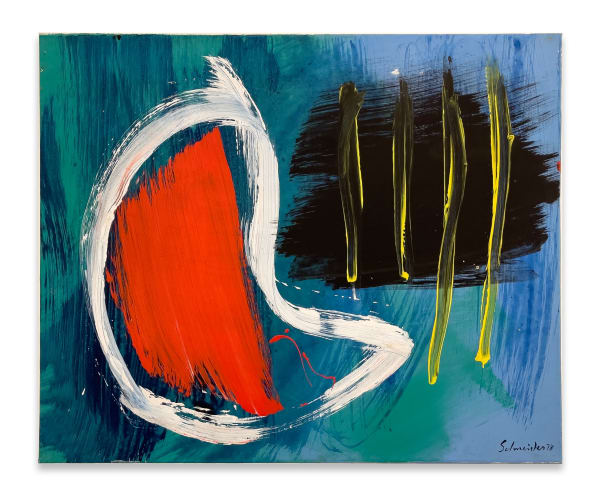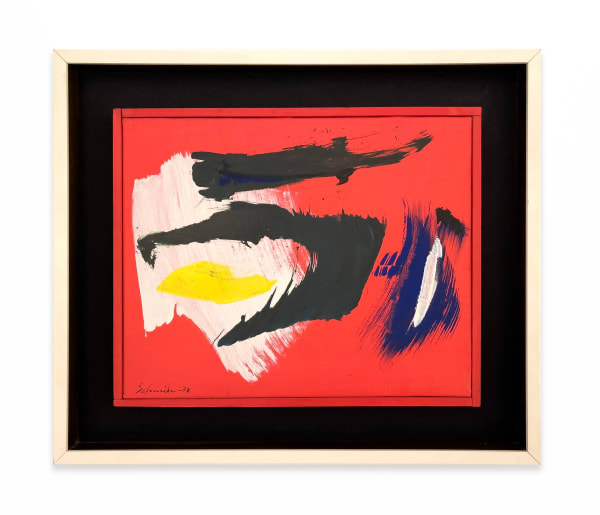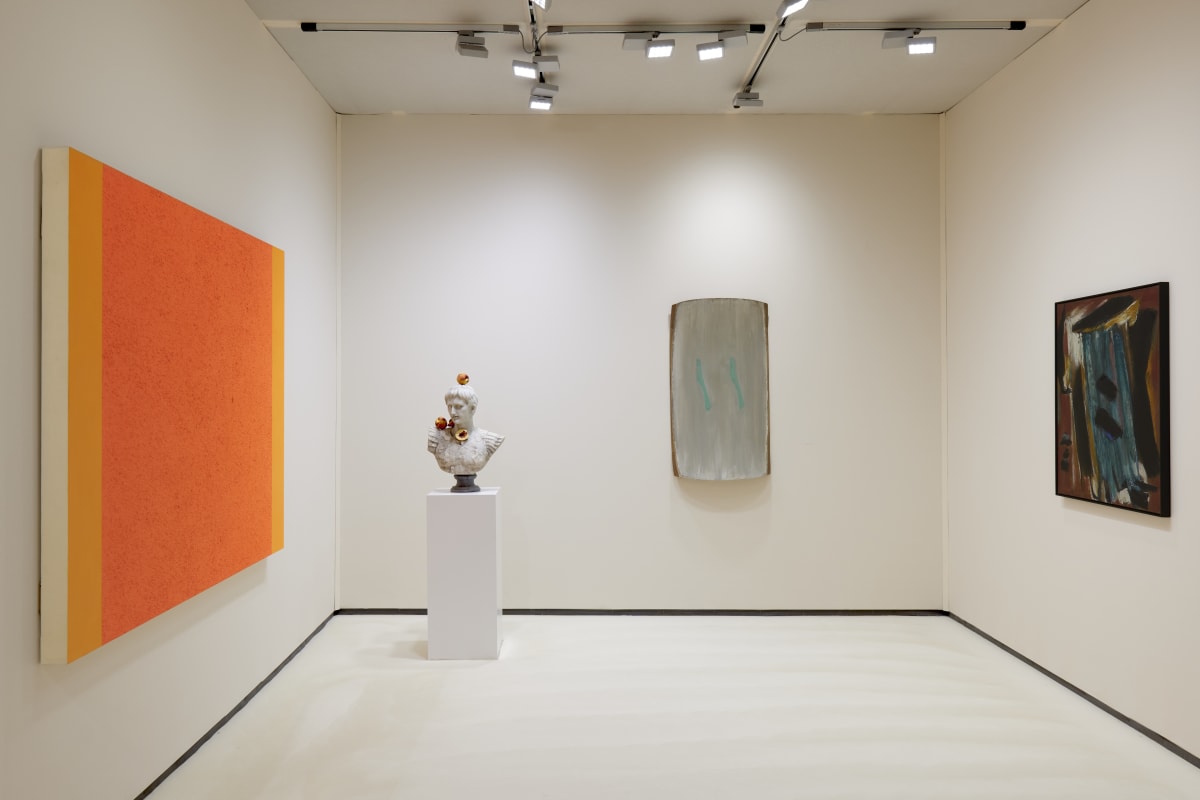Gérard Schneider was born in Switzerland in 1896. At 20 he relocated to Paris where he studied at the École nationale des Arts Décoratifs, and later at the École nationale des Beaux-Arts de Paris in the studio of painter Fernand Cormon, teacher to pupils including van Gogh and Toulouse-Lautrec. During his time in Paris, Schneider frequented musical circles which informed his early works, featuring a movement-based expression. He was exposed to the likes of Picasso and Kandinsky who had famously departed from reality in their work. It was just at the cusp of the war that Schneider would enter a...
-
 Gérard SchneiderUntitled, 1985Acrylic on paper laid on canvas150 x 100 cm
Gérard SchneiderUntitled, 1985Acrylic on paper laid on canvas150 x 100 cm
59 x 39 3/8 in
Framed: 156 x 113 x 3.5 cm -
 Gérard SchneiderOpus 56N, 1981oil on canvas86 x 116 cm
Gérard SchneiderOpus 56N, 1981oil on canvas86 x 116 cm
33 7/8 x 45 5/8 in
Framed : 97 x 124 x 5,5 cm -
 Gérard SchneiderOpus 62M, 1978oil on canvas35 x 27.5 cm
Gérard SchneiderOpus 62M, 1978oil on canvas35 x 27.5 cm
13 3/4 x 10 7/8 in -
 Gérard SchneiderOpus 55M, 1978acrylic on canvas50 x 61 cm
Gérard SchneiderOpus 55M, 1978acrylic on canvas50 x 61 cm
19 3/4 x 24 in -
 Gérard SchneiderComposition, 1975oil on canvas114 x 146 cm
Gérard SchneiderComposition, 1975oil on canvas114 x 146 cm
44 7/8 x 57 1/2 in
framed: 120 x 151 x 4 cm -
 Gérard SchneiderUntitled, 1970acrylic on canvas37 x 41 cm
Gérard SchneiderUntitled, 1970acrylic on canvas37 x 41 cm
14 5/8 x 16 1/8 in
Framed : 56 x 62 x 3,5 cm -
 Gérard SchneiderUntitled, 1970oil on canvas33 x 41 cm
Gérard SchneiderUntitled, 1970oil on canvas33 x 41 cm
13 x 16 1/8 in
Framed : 48 x 56 x 4,5cm -
 Gérard SchneiderOpus 3H, 1965oil on canvas50 x 61 cm
Gérard SchneiderOpus 3H, 1965oil on canvas50 x 61 cm
19 3/4 x 24 in
Framing dimensions: 83.5 x 99.5 x 5.5 cm -
 Gérard SchneiderOpus 69C, 1956oil on canvas100 x 81 cm
Gérard SchneiderOpus 69C, 1956oil on canvas100 x 81 cm
39 3/8 x 31 7/8 in
framed: 103 x 83 x 4 cm










